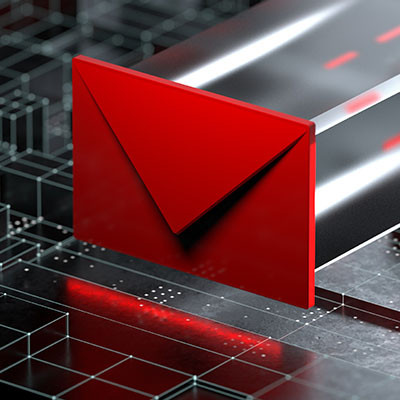When you buy into any idea, you need to ask yourself, “how much money am I willing to spend?” The same goes for your business’ IT. Of course, your business isn’t a public television telethon, but today, we’re going to pretend it is by going through the levels of investment you can make and how it can impact your business.
Apex Technology Blog
We aren’t going to try and pretend that the investments necessary to preserve your business’ data security are small ones. Especially at first glance, you may very well start to question if such an investment is truly necessary.
The simple fact of the matter is that, compared to the costs that a breach of privacy will incur, the investment you put into your security measures will suddenly seem like a real bargain.
Have you ever gotten a message that just makes your heart sink in your chest? Like, your dread piques the moment you see it? Chances are pretty good that your team members feel that way whenever you send them a particular message, particularly during certain times. Let’s consider why this may be the case, and how you can better manage your communications to more effectively communicate with your team.
Every piece of technology we regularly use today was once earth-shakingly innovative, regardless of how mundane and common it seems to us now. Think about it: people once had endless questions about the Internet, about computers…even about electricity. Let’s consider some modern innovations that we have many questions about now, but may someday be just as much of a given as the other tools we so commonly use today.
Even though the modern workplace tends to be PC-centric, Apple has had a major impact on technology and computing. It’s undeniable that Apple is pretty consistent with producing sleek, high-end hardware and efficient operating systems. Apple’s former CEO, Steve Jobs, was known to be a visionary and a perfectionist. That’s what makes this story even weirder.
How many of your employees do you think hold a second job? This isn’t a particularly outlandish concept, but one thing that has come about as a result of the COVID-19 pandemic and its surge of remote work is that some employees hold two jobs at the same time, and not in the way that you might expect.
How often do you receive emails from someone written in another language? We bet the answer is “not often,” but you never know when being able to translate an email might come in handy—especially if you ever do business overseas. Let’s go over the built-in translation functionality that comes with Gmail.
No matter how big your business is, you’ll always have technology expenses. It’s just a fact of the current workplace, and your profits will be inexorably tied to how well your IT works for you. Furthermore, the more IT costs rise, the more impact small and medium-sized businesses will feel from them. Today, we wanted to address this issue and how you can minimize the frustrations that stem from seemingly uncontrollable technology costs.
If Edgar Allan Poe worked in an office, here’s what one of his works would sound like:
True!—nervous—very, very dreadfully nervous I have been and am, but why will you say that I am mad? The office had sharpened my senses—not destroyed—not dulled them. Above all was my sense of hearing. I heard all things in heaven and on earth and many things in…the other place. So, how then am I mad, especially when I can so healthily and calmly tell you this story?
Businesses that sell goods have always used inventory management, whether using pen and paper or a spreadsheet. In the information age, inventory management is more complex and with a lot of businesses operating on the Internet, it is more important to manage well. This month, we will discuss what modern inventory management entails and how technology can provide the efficiency your business needs to be successful.
When it comes to your business’ cybersecurity, it can be too tempting to operate under the assumption that the few cybersecurity events you hear about on the news are all that happen. Unfortunately, this is far from actual fact. Let’s review some of the statistics that might change your impressions, especially if you hold the aforementioned assumption.
“It won’t happen to me.” This is a common excuse amongst business owners who refuse to equip their network with a comprehensive data backup and recovery solution. They may feel like they’re careful enough to avoid a major data loss-causing disaster. Yet, the inconvenient fact remains that a disaster can happen to any business, no matter how prepared they may be.
Artificially-intelligent image generation has become a hot topic in recent weeks and months. Not too long ago, an artist created a stir for winning a competition with an image that he largely created using an artificially-intelligent tool. Now, Microsoft has announced that similar AI-powered image generation tools will be integrated into many of their applications.
Whether we like it or not, remote work is not going anywhere, and now that employees have gotten a taste of what it feels like to work remotely, more are eager to do so than ever before. Unfortunately, the reality is that employers are eventually going to want their employees to return to the office in at least some capacity. How can employers do this without upsetting employees too much? The answer lies in a hybrid work environment.
As Miguel de Cervantes wrote in Don Quixote, “...is the part of a wise man to keep himself today for tomorrow, and not venture all his eggs in one basket.” It was wise advice then, and it’s wise advice now—especially when it comes to your business’ network and your data security.
Let’s explore the concept of network segmentation, and how it can help to protect your business.
In all aspects of society, upgrades and updates have become part of life. For instance, consider how often you’re prompted to update your software—and how often some people may ignore these prompts, assuming that everything will be just fine.
As you might imagine, this is not the mindset that will allow your business to advance. Instead, it’s important that you can identify when your technology is no longer helping and is instead holding you back so that you can implement that which will help your business advance.
Sometimes the worst scams out there are the simplest ones. Hackers don’t need a fancy or complicated malware or algorithm to create chaos for your organization; all they have to do is convince you that the email you’ve received in your inbox is from someone of authority within your business. Let’s go over how a business email compromise is pulled off and why you need to be wary of threats like these.
It’s a great feeling, being able to download something, but also being able to download it as a PDF file. In cases where you want to save something as a PDF rather than its original image or web page file, you can do so relatively easily in order to make printing and other tasks easier. You can do all of this right from your web browser.





























